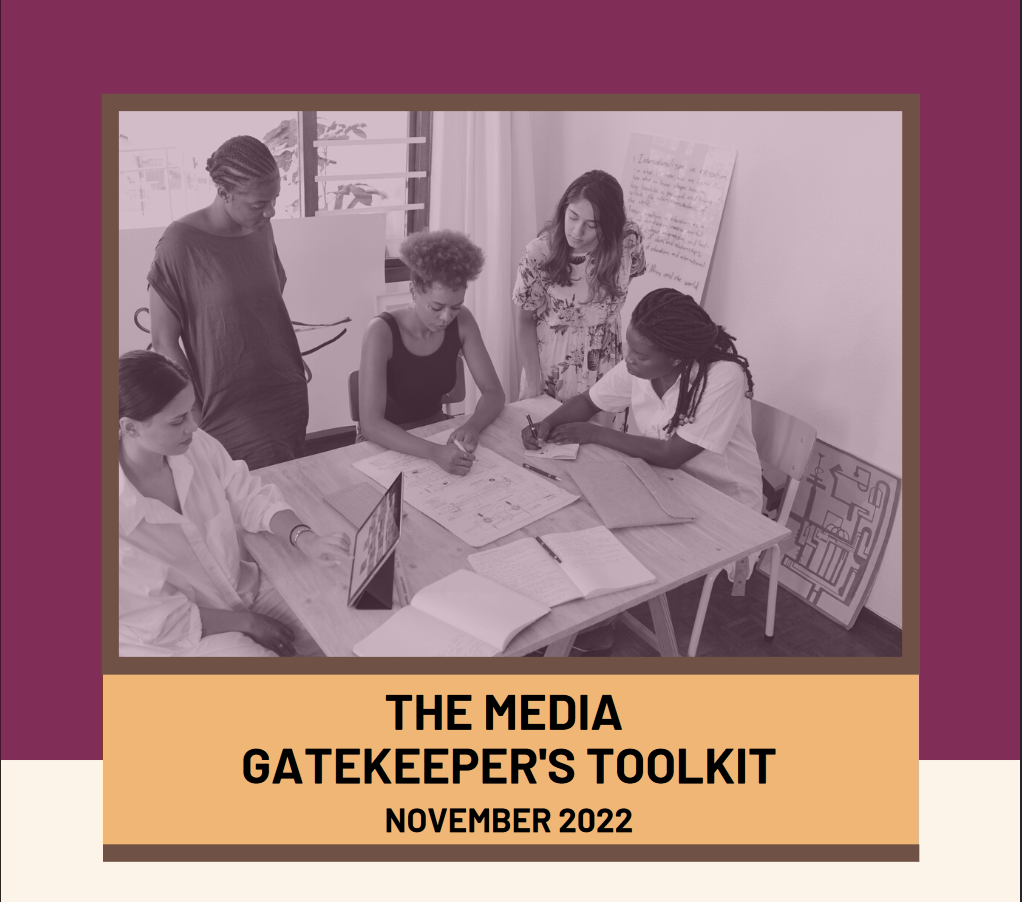The Media Gatekeeper’s Toolkit
Author: Grace Y. Choi
Publisher: OrgsinSolidarty Program, WCAPS
Publication Date: November 2022
Introduction: This toolkit can help anyone who controls access to an organization’s public profile develop new opportunities to support and elevate thinkers, writers, and speakers of color in our communications, research, events, and advocacy. These gatekeepers include communications and marketing staff, event planners, executive directors, managers, and others.
HOW TO EFFECTIVELY USE THIS TOOLKIT:
What are the goals of this toolkit?
With this toolkit, we intend to:
Create more opportunities for people of color to access public platforms, including the media, to influence law, policy, and culture, and to receive credit and recognition for their contributions.
Build and maintain institutional buy-in for these efforts.
Shift decisions about whose voices are heard and elevated from zero-sum framing to abundance/network framing.
What is the focus of this toolkit?
We recognize the importance of intersectionality (e.g., gender, sexual orientation, class, religion, disability), but this toolkit focuses on race and ethnicity to emphasize the urgent need to address racial inequities and combat systematic racism. Several other resources are available that highlight other dimensions of identity in media work:
Gender-Responsive Communications Toolkit - International Organization for Migration
Pride in Reporting - Love Matters
Creating Authentic Spaces - The 519
Disability Inclusion Toolkit - Ford Foundation
Socio-Economic Diversity and Inclusion Employers’ Toolkit - Social Mobility Commission
Who should use this toolkit?
This toolkit can help anyone who controls access to an organization’s public profile develop new opportunities to support and elevate thinkers, writers, and speakers of color in our communications, research, events, and advocacy. These gatekeepers include communications and marketing staff, event planners, executive directors, managers, and others.
What should you be mindful of when reading this toolkit?
The term People of Color (POC) is used to include all underrepresented racial and ethnic groups. See Reference Words for more details.
Everyone is involved in this toolkit. This toolkit is for anyone who can take action to elevate the voices of experts of color in the field, not just the dominant identity groups (which in the U.S. and Europe, tend to be white). We also note that while many individuals of color have built successful public profiles in the media, this toolkit aims to address systemic imbalances in our field. This toolkit emphasizes how we all can work together to democratize public discourse and bring in people, communities, and perspectives that have been historically excluded and ignored.
Avoid tokenism. Throughout the toolkit, we will emphasize the importance of avoiding tokenism. We encourage our readers to use this toolkit to take meaningful and continuous actions instead of making performative gestures to increase social capital. It takes long-term efforts to make changes that last.
One toolkit doesn’t cover all. We acknowledge that we are unable to cover all aspects of media and issues related to race in this one toolkit. We encourage more organizations to engage with these issues, tailor their approaches to their specific context, and create resources to support spokespeople in the peace and security field.


